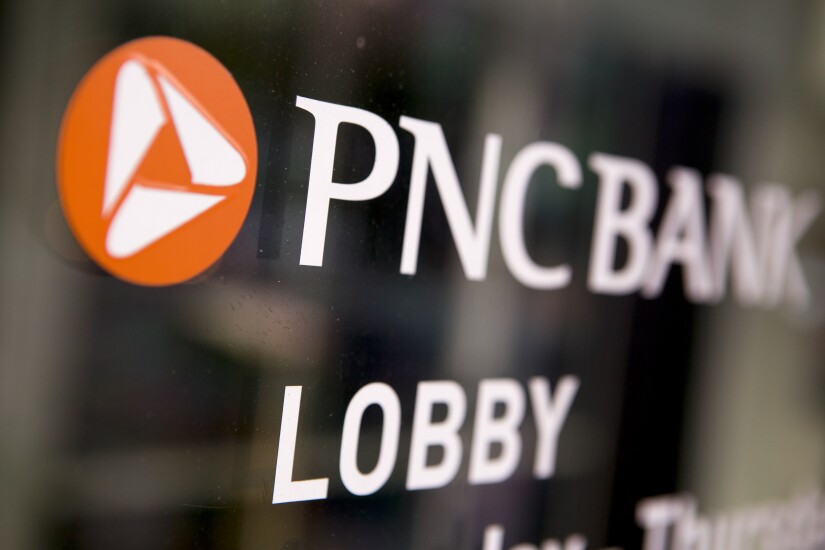

High-priced plastic
“It’s a statement piece, a real conversation-starter in business and social settings,” said Marina Kissam, vice president of customer experience at New York-based Luxury Card, which recently won a patent for its gilded card design.
As outrageous as the Luxury Card sounds, it's a natural extension of the direction the industry is taking. To turn a profit, issuers need to keep customers around for at least a few years, and the escalating race to top rivals’ rewards is beginning to undermine that goal, said Brian Riley, credit card director at Mercator Advisory Group.
“The elite card issuers are working now to hit on a value proposition that doesn’t depend on these rich introductory offers, because profits require customer longevity, not constant turnover,” Riley said.

Heavy metal
Surely, consumers must also like the Sapphire card's rewards, but they also felt so overwhelmingly that the metal material made it special that, in late 2016, Chase reportedly started
For PNC, it was natural to take the bank's branded color of "PNC Orange" and apply it to the credit card itself. "Not only does it help to distinguish the card in our customer’s wallet but we want them to make that positive association with the brand whenever they pull out our card," said Tanya Herriott, senior vice president of credit card marketing at PNC Bank.
Still, PNC uses the orange core only in select cards. "We consider each product, audience and a variety of design elements when developing the card design—all of the elements need to work well together," Herriott said.

Drawing attention
Maybe not. In June,
One key difference this time around is the Square card is customizable with a business logo, signature or any other kind of doodle. Square seems to have a
The customizable media is likely to make the card appealing to younger users, presumably as direct competition for the incoming Venmo card. Historically, other digital payment providers such as
“If you want to be top of wallet you need to be able to play both in the digital world and the physical world," said Michael Moeser, director of payments at Javelin. "Plus, since only 1 in 10 dollars are spent online, gaining physical POS dollars for digital players like Venmo and Square is pure uncharted territory.”
However, the motivation behind Square and Venmo’s plastic plays may be less about transaction volume and more about brand extension across the digital chasm, plus a playful means of getting millennials to apply for cards that they may not get to use often otherwise.

Instant refunds
Future features will include a simple way to apply for refunds and review journey histories for all forms of contactless payment, with the latter due next spring.
This presents a significant upgrade to the current system that allows funds to be added to transit cards online, but requires a 24-hour wait and tapping the card at a specific station to bring the card's balance up to date. The new app will cut that processing time down to 30 minutes and remove the need to visit a nominated stop.
Nationwide, mass transit systems are transitioning from archaic cash-based systems to electronic cash-free networks, with numerous initiatives currently underway in metropolitan areas such as Boston and New York.
TfL’s move to the contactless Oyster card has been heralded as a huge success, but the upgrade announcement highlights that changes were not system wide and that any payment/ticketing network is a constant work in progress.
Nonetheless, mass transit remains an appealing Trojan Horse for driving card spend, or even just for acclimating a captive consumer base to the perks of contactless payments.
“They always talk about the killer app, that’s actually the killer use case,” says Jack Jania, senior vice president of strategic alliances at Gemalto Inc. “You use that same card for your transit, you use it twice a day, five times a week. It has a tendency to stay top of wallet.”

Consumer-driven replacement cycle
Despite the heightened security that comes with EMV chips and tokenization, consumers remain worried about their personal data being exposed in a seemingly nonstop parade of breaches. This leads to many cardholders requesting a new card as a precaution, even if they have no evidence that they were directly affected by a particular breach.
"It's less about their cards being compromised than seeing news about a major breach at a place where they shop," he said. "The customer wakes up and sees a report about a breach, and wants to have his or her card replaced quickly whether they are a victim or not."
Dixon did not say how many cards get replaced across the market because of this fear, but given the
This trend may also drive the use of virtual cards, which can be reissued faster because they can arrive in an app.
"Mobile wallets have struggled to take off over the last 10 years, but as they gain traction, consumers will want to get cards and they won't want to go through the process of waiting for cards in the mail," Dixon said.

Investing in speed
Marqeta develops technology that streamlines card issuance and payment processing, and is increasingly targeting e-commerce companies that authorize and control their own transactions through branded P-to-P transfers, virtual and physical cards. It also uses data analysis to power marketing and security risk management.
Marqeta's Just-In-Time, a feature that is included in Marqeta's core product, enables developers to sign up for a sandbox and use Marqeta's card controls and configuration to produce fully funded card programs in a few days.
Visa opened its own
"We are always looking for partnerships and investments that allow us to evaluate innovative, new ways to support our clients’ needs, and increasingly see open, developer-friendly platforms as a way to help clients move quickly in today's fast-paced environment," said Jim McCarthy, executive vice president of innovation and strategic partnerships for Visa, in a press release.

Reverse rewards
However, a deeper dive into the workings of the program — which offers 2% cash back when shoppers use a debit card or bank account to load an Amazon stored-value account — should give the card payments industry serious cause for concern.
Newer programs like
Exploring the inner workings of Amazon Prime Reload provides some revelations on Amazon’s plans for its latest service.
After enrolling a debit card and bank account (Amazon chooses which to use when processing reloads),
Amazon is subtly guiding the end user to load at least $100 to the account for and to burn through this to earn rewards. Psychologically, it is also abstracting the funds from traditional payment media, presumably to make the value stored by Amazon “fun money”, rather than a value that is coming directly from the weekly budget. Its use of the phrase “Gift Card Balance” is somewhat telling - this money is a gift, it just happens to come from yourself.
The launch of Amazon Prime Reload will not be welcome news to card networks, issuers and traditional retailers.
The banks and card networks fought relentlessly with PayPal over the years against its use of a similar practice of using linked bank accounts to cut its own payment costs. Visa and its peers finally
If Amazon succeeds in convincing shoppers to use their Amazon Balance instead of a payment card, issuer revenues from Amazon will dip dramatically as the retailer shifts more reload volume to ACH.





